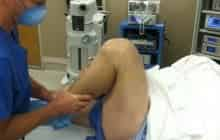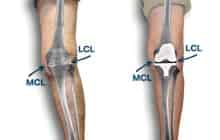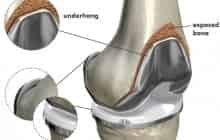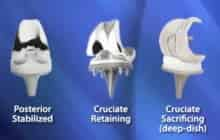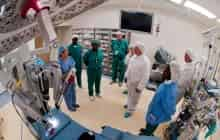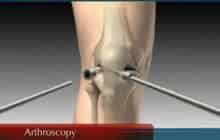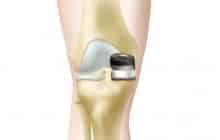Knee replacement surgery involves replacing some or all of the components of the knee joint with a synthetic implant, to repair the damaged weight-bearing surfaces that are causing pain. A total knee replacement surgery replaces all three compartments of the diseased knee joint. A partial knee replacement involves an implant in just one or two compartments of the knee, retaining any undamaged parts. While there are non-surgical and surgical interventions short of knee replacement which will often provide temporary relief, the long-term resolution to most knee degeneration will be joint replacement.
There are several different implant designs (see: total implants | partial implants) but each will offer renewed stability and movement. Overall, there are two main benefits to be gained from knee replacement surgery: (1) elimination of pain and (2) improved range of motion. Of all possible surgical interventions, total knee replacement offers the greatest quality of life improvement. The procedure has a high rate of success.
In order to make an informed decision about knee replacement surgery, it may be beneficial to learn more about the various implant options and the surgery itself.




